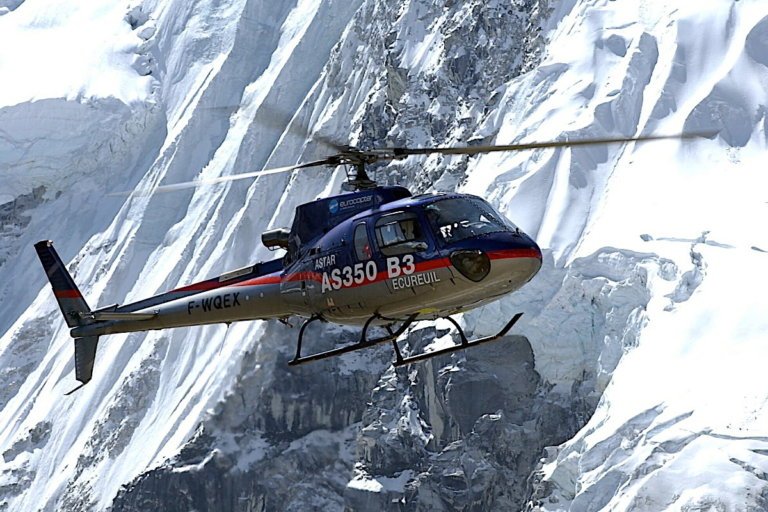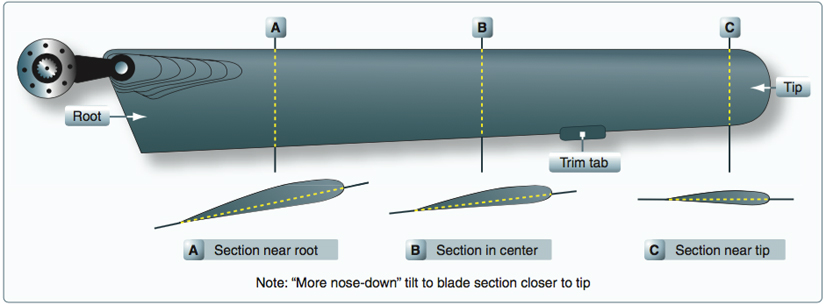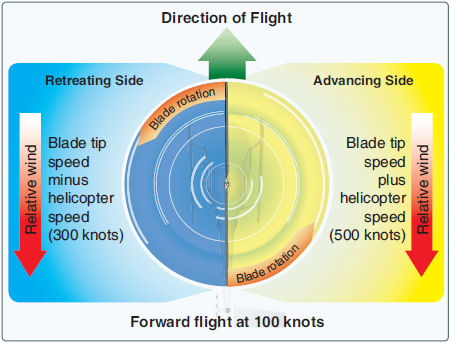Did You Know?:
The highest ever recorded helicopter landing occurred in 2005 when a pilot named Didier Delsalle landed a helicopter on the summit of Mt. Everest, 29,029 feet from the ground!
(https://verticalmag.com/features/landing-everest-didier-delsalle-recalls-record-flight/)
How do Helicopters Generate Lift?
It may seem obvious that a helicopter can achieve lift from
the massive blades spinning on top of it. While that is
true, there are a lot of minor details about the rotors that
you may not know.
• The shape of the rotors produce the lift by using
Bernoulli's Principle which says that since the air flows
faster over the top of the blade than the bottom. This
causes less air pressure on the top of the blade which
generates the lift. (6)
• The cross-section of the blade varies from root to tip.
Generally being more angled at the root and more flat at the
tip. This helps to balance the loads at each point between
the root and tip. (4)

(http://www.buildahelicopter.com/homebuilt-helicopter-rotor-blades.php)
• Helicopters can have anywhere from 2 to 7 blades, but
more blades is not always better. More blades produce more
lift, but for smaller helicopters that only need 2 blades,
it would be detrimental to add more blades and create an
proportional amount of lift compared to the size of the
helicopter.
• The more blades that a helicopter has, the faster they
have to rotate. On a typical smaller helicopter, they will
rotate 400 to 500 times per minute. In a way bigger
helicopter like a Chinook, the blades will only rotate at
about 225 RPM. (5)
• As the tips of the blades get gain speed as the RPMs go
up, they can approach the speed of sound. This is
problematic because as the tips get closer to the speed of
sound, the airflow over the retreating blade gets smaller
and smaller relative to the airflow over the advancing
blade. If the airflow over the retreating blade is too low,
then it will cause the helicopter to stall. (7)

(
http://www.faa.gov/regulations_policies/handbooks_manuals/aviation/helicopter_flying_handbook/)